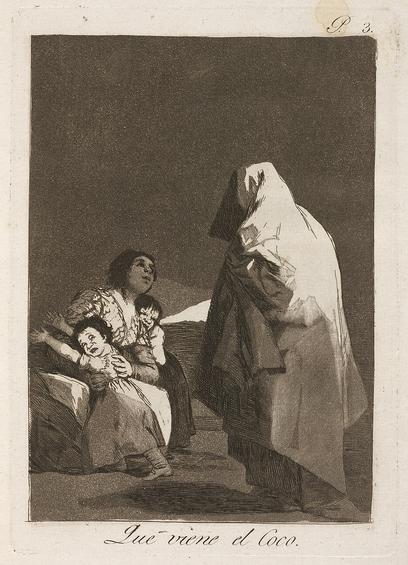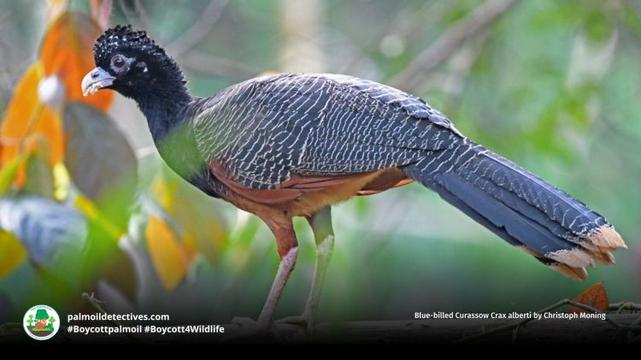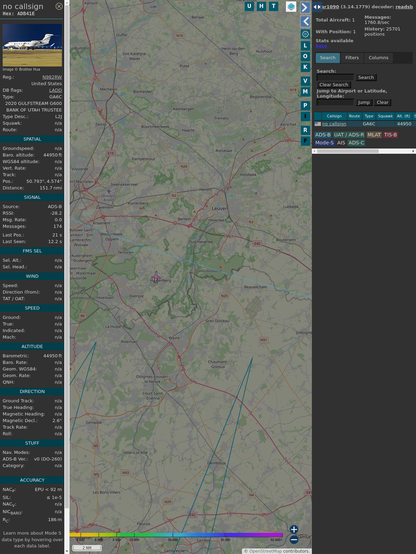Blue-billed Curassow Crax alberti
Blue-billed Curassow Crax alberti
IUCN Status: Critically Endangered
Location: Colombia
The Blue-billed Curassow is endemic to Colombia, with remaining populations in the tropical forests of the Magdalena Valley, the Sierra Nevada de Santa Marta, and the Serranía de San Lucas. These birds inhabit lowland humid forests and fragmented secondary woodlands, clinging to survival in one of the world’s most deforested biodiversity hotspots.
The endearing Blue-billed Curassow Crax alberti is a unique bird of #Colombia currently classified as Critically Endangered by the IUCN Red List due to rapid habitat loss for multiple different cash crops and intense hunting pressures. Less than 2,500 mature individuals remain, with many subpopulations highly fragmented and isolated. A shy, ground-dwelling bird, Blue-billed Curassows plays an essential role in forest regeneration through #seeddispersal. But #timber, #meat, #goldmining, #coca plantations, and #palmoil agriculture have devoured more than 90% of their original range. Without urgent conservation action, this #bird faces imminent #extinction. Always choose products that are 100% #palmoilfree and go #vegan BoycottPalmOil, always #BoycottGold #Boycott4Wildlife
https://youtu.be/4yd5AvFqxRM?si=WoGaoOWpW_ot4o3e
Stunning turkey-like #birds, blue-billed #Currasows 🪿🦜 are critically #endangered in #Colombia 🇨🇴 due to #PalmOil, illegal #Coca, soy and meat #deforestation. Help them and be #vegan 🥩🩸⛔️ #BoycottPalmOil 🌴🩸🚜🔥🚫 #Boycott4Wildlife @palmoildetect https://palmoildetectives.com/2021/02/18/blue-billed-curassow-crax-alberti/
Share to BlueSky Share to Twitter A beautiful and colourful #bird 🦜🕊️ the blue-billed #Currasow of #Colombia faces a plethora of serious threats incl. illegal #GoldMining 🩸🔥⛔️ and #PalmOil. Help them when and #BoycottGold #BoycottPalmOil 🌴🩸🚜🔥🚫 #Boycott4Wildlife @palmoildetect https://palmoildetectives.com/2021/02/18/blue-billed-curassow-crax-alberti/
Share to BlueSky Share to Twitter Appearance and Behaviour
The Blue-billed Curassow is a striking, turkey-sized bird with glossy black plumage in males and a striking pale blue cere at the base of their bill, from which the species takes their name. Females are distinguished by their rufous-brown underparts and barred tails. Both sexes feature a curled crest of black feathers atop their heads, adding to their dramatic appearance (Shanahan, 2017).
They are shy and elusive birds, preferring to forage alone or in pairs along the forest floor. Observations in El Paujil Bird Reserve noted that they forage by scratching leaf litter for fallen fruit, seeds, invertebrates, shoots, and occasionally carrion or even terrestrial crabs (Urueña, 2008a; Melo et al., 2008). Roosting sites are usually located in tree foliage close to feeding areas and reused for several days (Hirschfeld, 2008).
Diet
The Blue-billed Curassow is an omnivore. Its diet is mainly composed of fruit and seeds, but it also consumes invertebrates such as insects, shoots, and occasionally carrion. A recent survey documented seed consumption from at least 15 plant species, as well as one record of terrestrial crab consumption (Urueña, 2008a; Quevedo et al., 2005).
Reproduction and Mating
Breeding occurs primarily in the dry season, with nests observed between December and March. However, studies in the El Paujil Bird Reserve noted a possible second breeding season from July to September (Urueña, 2008b). Clutches typically contain two to three eggs. As with other cracids, both parents may play a role in chick rearing. In the wild, families with chicks are typically observed during March through August (Cuervo & Salaman, 1999).
Geographic Range
Endemic to Colombia, the Blue-billed Curassow once roamed vast tracts of humid lowland forest throughout the northwestern Andes. Now, it persists only in fragmented patches across the Magdalena Valley, the Sierra Nevada de Santa Marta, and the Serranía de San Lucas (Valencia et al., 2023; IUCN, 2023).
Historically, over 90% of its potential range has been cleared or degraded due to deforestation for agriculture, coca plantations, and ranching (Melo et al., 2008). One GIS analysis estimated a 39% loss in potential distribution between 1986 and 2002 alone, with an annual deforestation rate of 2.4% (Melo et al., 2008).
Threats
• Deforestation for agriculture and livestock is the most significant threat to the survival of the Blue-billed Curassow. Almost 90% of their tropical forest habitat in northern Colombia has been cleared or severely degraded due to cattle ranching, rice cultivation, cotton production, palm oil, soy and coca plantations. These activities have fragmented the curassow’s range into isolated patches too small to support viable populations.
• The illegal pet trade and commercial hunting pose a grave threat. Curassows are hunted for meat and occasionally captured for the illegal pet trade. Surveys in Antioquia reported at least 57 individuals killed between 2002 and 2003, mostly during the breeding season, exacerbating their population decline (Melo et al., 2008). Hunting pressure remains high in rural communities surrounding the few remaining forest patches (Cabarcas et al., 2008).
• Political instability and post-conflict development have further imperilled the species. Ironically, decades of civil conflict prevented large-scale deforestation in some remote regions by limiting access to armed groups. However, peace agreements have led to rapid expansion of agriculture, mining, and logging into formerly inaccessible forests, especially in the Sierra Nevada de Santa Marta and Serranía de San Lucas—key strongholds for the species (Shanahan, 2017; Negret et al., 2017).
• Illegal gold mining and drug production have escalated forest destruction and brought with them roads, settlements, and deforestation. The 1996 gold rush in the Serranía de San Lucas resulted in widespread logging and land clearance for coca production. Subsequent government herbicide spraying has further damaged ecosystems essential for the curassow’s survival (Cuervo & Salaman, 1999; Melo et al., 2008).
• Habitat fragmentation has reduced the availability of forest patches larger than 3 km², which are considered the minimum size needed to support a viable population of Crax alberti (Melo et al., 2008). This has severely disrupted dispersal, gene flow, and nesting success.
• Infrastructure projects, such as highways, act as barriers between populations. For example, the Santa Marta-Riohacha Highway isolates birds in Tayrona National Park from those in the nearby Sierra Nevada foothills, reducing connectivity and increasing local extinction risks (Strewe et al., 2010).
• Low reproductive success in captivity threatens the future of ex-situ conservation. As of 2021, there were only 27 Blue-billed Curassows in Colombian zoos, most of them ageing. Only one male was actively breeding, making captive-breeding efforts challenging and precarious (Dueñas Flórez, 2021).
Take Action!
Help protect the Blue-billed Curassow by refusing to support deforestation-linked products and industries. Boycott palm oil, logging, and industrial meat farming, all of which fuel forest loss. Support indigenous-led conservation efforts in Colombia and ecotourism models that empower local communities while preserving habitat. Take action and use your wallet as a weapon! #BoycottPalmOil #Boycott4Wildlife #Vegan #BoycottMeat
FAQs
How many Blue-billed Curassows are left in the wild?
According to the IUCN Red List, there are estimated to be between 150 and 700 individuals remaining in the wild (IUCN, 2023) they are tragically critically endangered. Other sources suggest the total may be as high as 2,500 mature individuals when including fragmented populations across different reserves and national parks.
What is the lifespan of a Blue-billed Curassow?
In the wild, the lifespan is not well documented due to their elusive nature, but it is thought to be around 15–20 years, similar to other large cracids. In captivity, individuals may live longer depending on conditions and veterinary care (Melo et al., 2008).
What are the predators of the Blue-billed Curassow?
Natural predators include large birds of prey and terrestrial mammals such as jaguars and ocelots. However, human hunting remains the dominant threat, particularly targeting adults during breeding season and young birds for food and captivity (Melo et al., 2008; Cabarcas et al., 2008).
Why is the Blue-billed Curassow critically endangered?
This species has suffered catastrophic declines due to habitat destruction, especially from logging, palm oil agriculture, coca plantations, and mining. Additionally, hunting for bushmeat and egg collection has further reduced population numbers. The fragmentation of remaining populations also increases their vulnerability to extinction (Valencia et al., 2023).
Support the conservation of this species
This animal has no protections in place. Read about other forgotten species here. Create art to support this forgotten animal or raise awareness about them by sharing this post and using the #Boycottpalmoil #Boycott4Wildlife hashtags on social media. Also you can boycott palm oil in the supermarket.
Further Information
BirdLife International. 2018. Crax alberti (amended version of 2016 assessment). The IUCN Red List of Threatened Species 2018: e.T22678525A127590617. https://dx.doi.org/10.2305/IUCN.UK.2016-3.RLTS.T22678525A127590617.en. Downloaded on 18 February 2021.
Dueñas Flórez, M. (2021, August 27). Blue-billed Curassow (Crax alberti): Conservation efforts in Colombia. Association of Avian Veterinarians. https://www.aav.org/blogpost/1525799/375769/Blue-billed-Curassow-Crax-alberti–Conservation-efforts-in-Colombia
Melo, I., Ochoa-Quintero, J. M., López-Arévalo, H. F., & Velásquez-Sandino, P. (2008). Potential habitat loss and subsistence hunting of Blue-billed Curassow (Crax alberti), a Colombian critically endangered endemic bird. Caldasia, 30(1), 161–177.
Shanahan, M. (2017, November 2). Will the bird that dodged a bullet pay the price of peace? Mongabay. Retrieved from https://news.mongabay.com/2017/11/will-the-bird-that-dodged-a-bullet-pay-the-price-of-peace/
Valencia, I. F., Kattan, G. H., Valenzuela, L., Caro, L., Arbelaez, F., & Forero-Medina, G. (2023). Evaluation of alternative conservation strategies for the blue-billed curassow Crax alberti in the Middle Magdalena Valley, Colombia. Oryx, 57(2), 239–247. doi:10.1017/S0030605322000060
Blue-billed Curassow Crax alberti
How can I help the #Boycott4Wildlife?
Take Action in Five Ways
1. Join the #Boycott4Wildlife on social media and subscribe to stay in the loop: Share posts from this website to your own network on Twitter, Mastadon, Instagram, Facebook and Youtube using the hashtags #Boycottpalmoil #Boycott4Wildlife.
✓ Subscribed
2. Contribute stories: Academics, conservationists, scientists, indigenous rights advocates and animal rights advocates working to expose the corruption of the palm oil industry or to save animals can contribute stories to the website.
Wildlife Artist Juanchi Pérez
Read more
Mel Lumby: Dedicated Devotee to Borneo’s Living Beings
Read more
Anthropologist and Author Dr Sophie Chao
Read more
Health Physician Dr Evan Allen
Read more
The World’s Most Loved Cup: A Social, Ethical & Environmental History of Coffee by Aviary Doert
Read more
How do we stop the world’s ecosystems from going into a death spiral? A #SteadyState Economy
Read more
3. Supermarket sleuthing: Next time you’re in the supermarket, take photos of products containing palm oil. Share these to social media along with the hashtags to call out the greenwashing and ecocide of the brands who use palm oil. You can also take photos of palm oil free products and congratulate brands when they go palm oil free.
https://twitter.com/CuriousApe4/status/1526136783557529600?s=20
https://twitter.com/PhillDixon1/status/1749010345555788144?s=20
https://twitter.com/mugabe139/status/1678027567977078784?s=20
4. Take to the streets: Get in touch with Palm Oil Detectives to find out more.
5. Donate: Make a one-off or monthly donation to Palm Oil Detectives as a way of saying thank you and to help pay for ongoing running costs of the website and social media campaigns. Donate here
Pledge your support #Bird #birds #Birdsong #BlueBilledCurassowCraxAlberti #BoycottGold #Boycott4wildlife #BoycottGold #BoycottMeat #BoycottPalmOil #coca #Colombia #CriticallyEndangeredSpecies #Currasow #Currasows #deforestation #endangered #extinction #ForgottenAnimals #goldmining #hunting #illegalPetTrade #meat #palmoil #palmoilfree #SeedDispersers #seeddispersal #SouthAmericaSpeciesEndangeredByPalmOilDeforestation #timber #vegan













